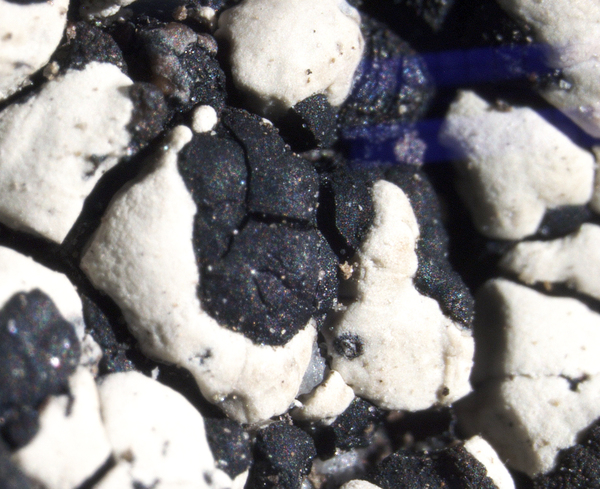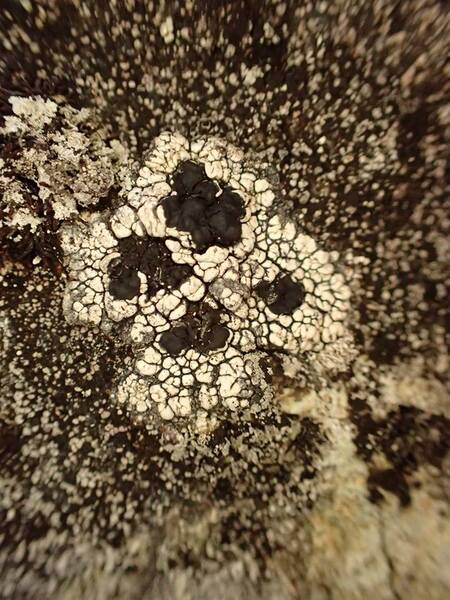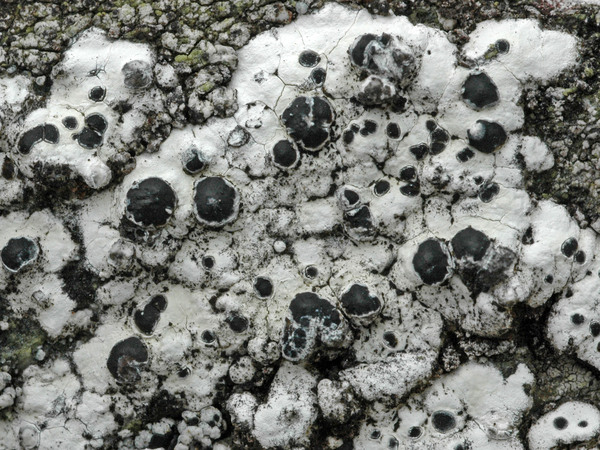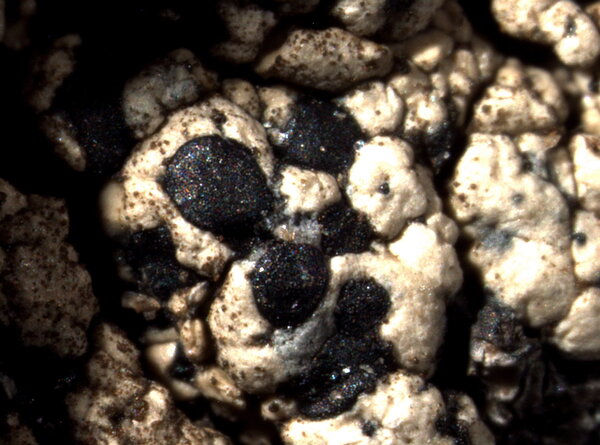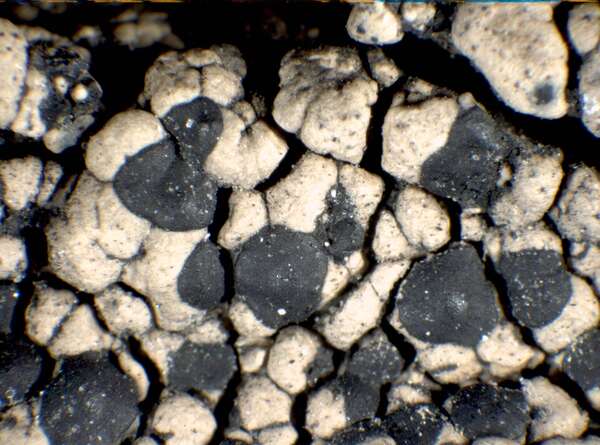Calvitimela aglaea (Sommerf.) Hafellner
in Hafellner & Türk, Stapfia, 76: 151, 2001. Basionym: Lecidea aglaea Sommerf. - Suppl. Fl. Lapp.: 144, 1826.
Synonyms: Lecidea brunneri Nyl.; Lecidea relanderi Räsänen; Lecidella aglaea (Sommerf.) Körb.; Oedemocarpus aglaeus (Sommerf.) Trevis.; Tephromela aglaea (Sommerf.) Hertel & Rambold
Distribution: N - Frl (Tretiach & Hafellner 2000), TAA (Nascimbene & al. 2022), Lomb, Piem (Isocrono & al. 2004), VA (Piervittori & Isocrono 1999), Emil (Fariselli & al. 2020). C - Sar (Nöske 2000, Nöske & al. 2000).
Description: Thallus crustose, episubstratic, rather thick, warted-areolate, pale greenish yellow, grey or yellowish brown, usually darkening in the herbarium, forming up to 8(-10) cm wide patches, rarely delimited by a black prothallus. Medulla white, I-. Areoles mostly contiguous, up to 2 mm wide, flat to convex; cortex up to 60 µm thick, of thick-walled hyphae with cylindrical lumina, containing crystals dissolving in K; medulla white, of loosely interwoven, thin-walled hyphae. Apothecia mostly biatorine, black to brown-black, somehow shiny, 0.5-2(-3) mm across, with a flat to finally irregularly convex, epruinose disc, and a thin, poorly evident, soon excluded proper margin. Proper exciple poorly developed, with a dark brown to dark green-brown rim, paler brown within; epithecium bluish green-black, sometimes in part brown; hymenium colourless, 60-80 µm high, I+ blue; paraphyses coherent, sparingly branched and anastomosing, 3-4 µm thick in lower part, the apical cells to 8 µm wide, with a sharply delimited pigmented zone in the wall, and covered by a green gel; hypothecium colourless in upper part, pale yellow-brown in lower part, I-. Asci 8-spored, clavate, the K/I+ blue tholus penetrated by a faintly amyloid apical cushion with parallel or diverging flanks, the wall K/I-, surrounded by a K/I+ blue outer layer, Lecanora-type. Ascospores 1-celled, hyaline, ellipsoid, (7.5-)12-16 x 4.5-8.5 µm. Pycnidia dark, immersed, the wall greenish around the ostiole. Conidia hyaline, short-bacilliform, straight, 6-9 x 1-2 µm. Photobiont chlorococcoid. Spot tests: cortex K+ yellow, C-, KC+ yellow, P-; medulla K+ orange, C-, KC-, P+ orange. Chemistry: atranorin and often usnic, stictic, norstictic and/or bourgeanic acids.Note: an arctic-alpine, circumpolar species found on inclined faces of hard siliceous rocks in upland areas.
Growth form: Crustose
Substrata: rocks
Photobiont: green algae other than Trentepohlia
Reproductive strategy: mainly sexual
Commonnes-rarity: (info)
Alpine belt: rather common
Subalpine belt: common
Oromediterranean belt: extremely rare
Montane belt: rather rare
Submediterranean belt: absent
Padanian area: absent
Humid submediterranean belt: absent
Humid mediterranean belt: absent
Dry mediterranean belt: absent

Predictive model
Herbarium samples
Growth form: Crustose
Substrata: rocks
Photobiont: green algae other than Trentepohlia
Reproductive strategy: mainly sexual
Commonnes-rarity: (info)
Alpine belt: rather common
Subalpine belt: common
Oromediterranean belt: extremely rare
Montane belt: rather rare
Submediterranean belt: absent
Padanian area: absent
Humid submediterranean belt: absent
Humid mediterranean belt: absent
Dry mediterranean belt: absent

Predictive model
| Herbarium samples |
 Index Fungorum
Index Fungorum
 GBIF
GBIF
